KAKIYA
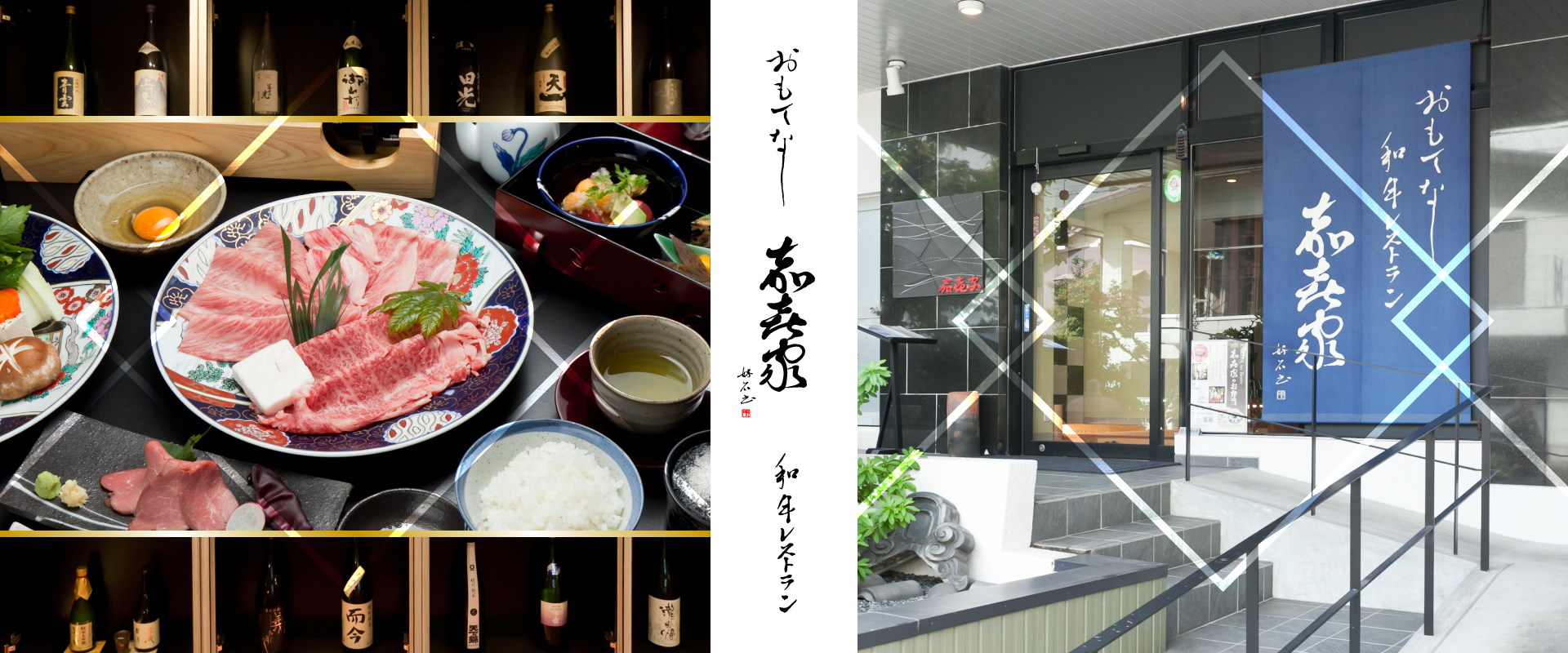
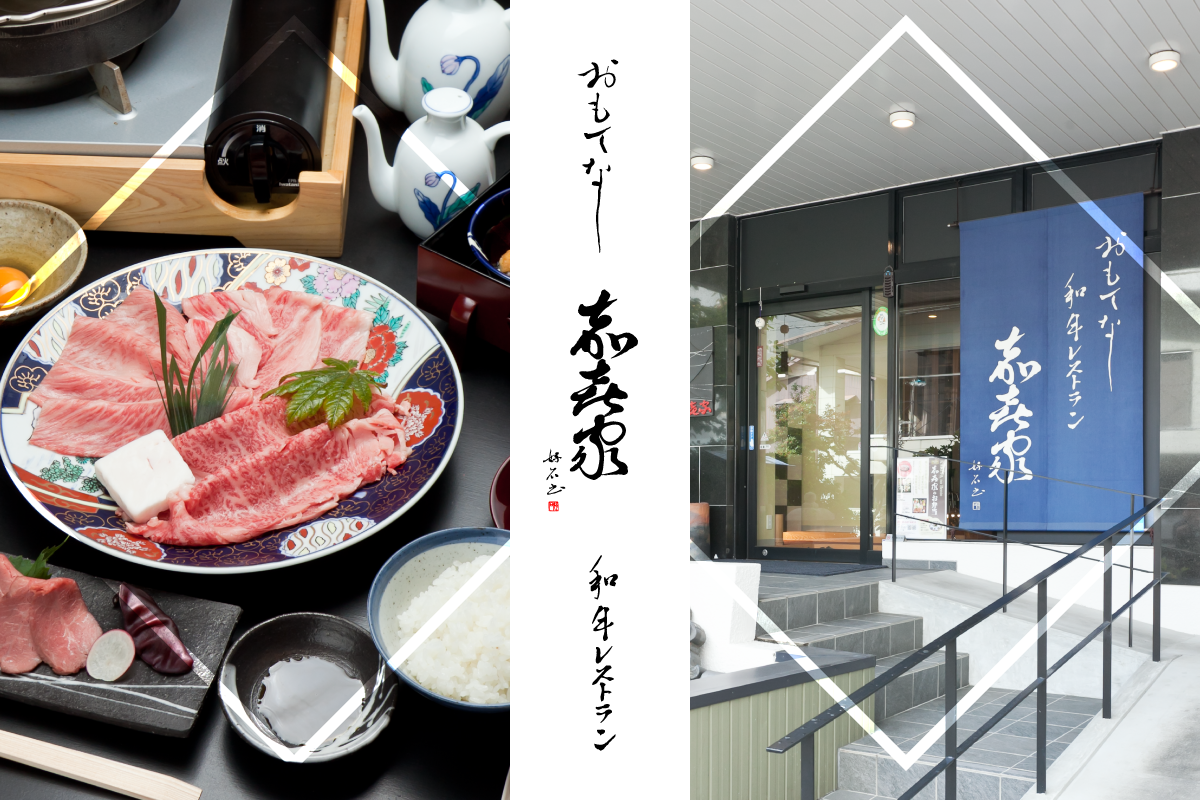
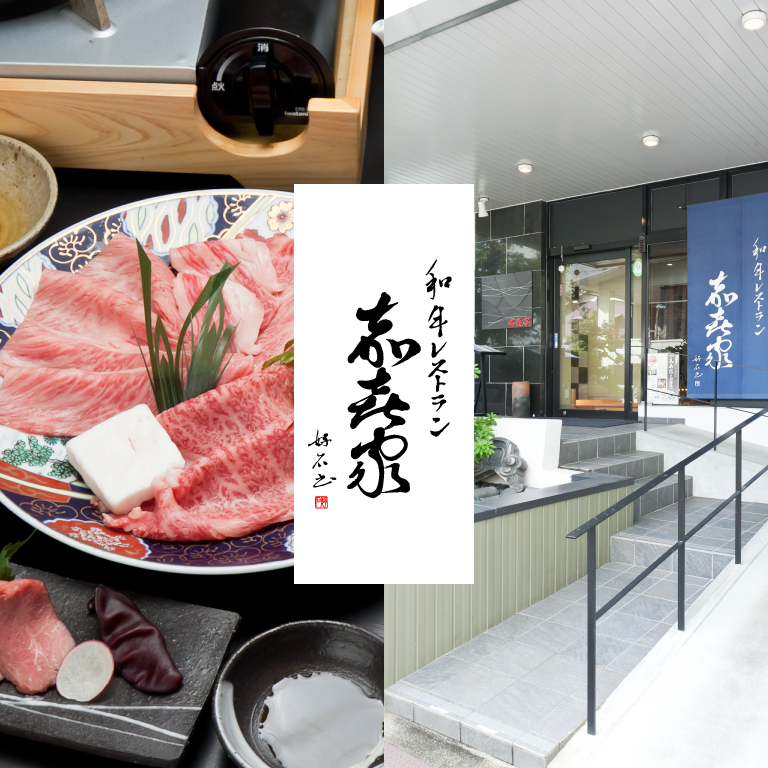
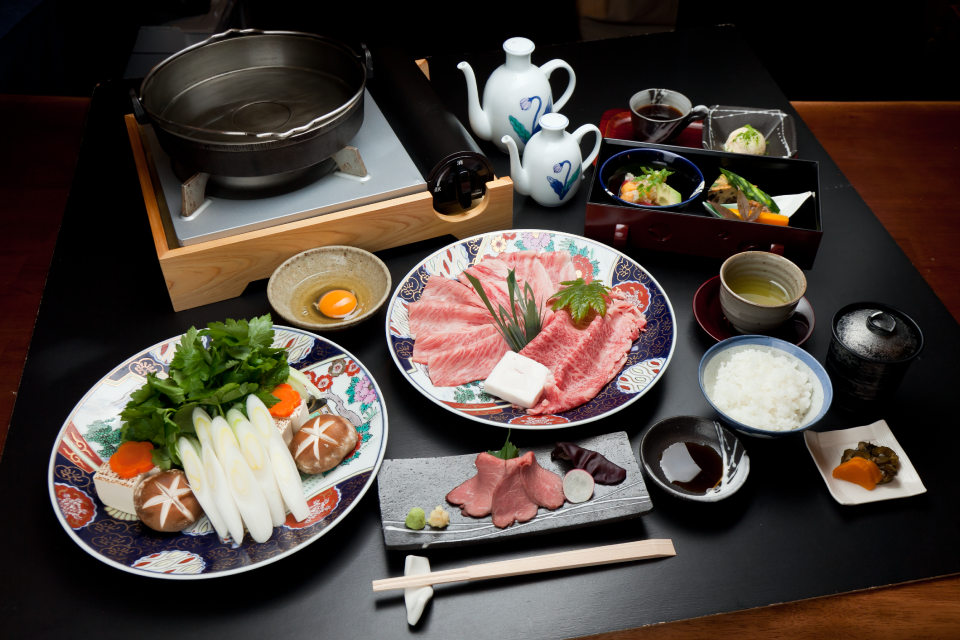
Delicious sukiyaki
to enjoy with all 5 senses
Representing Japanese cuisine since the Edo period, Sukiyaki is a symbol of Japan, a dish that brings people together to share joy.
Experience authentic Sukiyaki and hospitality with Mie's local sake at Wagyu restaurant Kakiya. Enjoy the rich tapestry of Japanese food culture.
OUR SUKIYAKI
Traditional Japanese Style Wagyu Restaurant Kakiya
Green Onion
First, green onions. Then add homemade broth, Afterwards, place green onions under the meat. There are 3 reasons for this.
Reason one is to prevent the meat from sticking to the pot. Other places directly sear the meat, I add the meat to the pot while it's still cold. As a result, the "white," fatty part of the meat has a lower melting point than the "red," so it melts first and prevents sticking.
However, it tends to become somewhat mushy overall, with a high moisture content. To prevent that, at Kakiya, we lay green onions underneath to avoid it.
The second reason is that the "umami" (savory), flavor of the meat permeates into the green onions. While meat alone provides umami from inosinic acid, adding green onions enhances the flavor even more due to the synergistic effect with glutamic acid.
The 3rd reason is the aroma and flavorfulness of grilled green onions. The meat, cooked together with green onions, contains a substantial amount of high-quality unsaturated fatty acids. This results in flavor that does not overpower the meat.
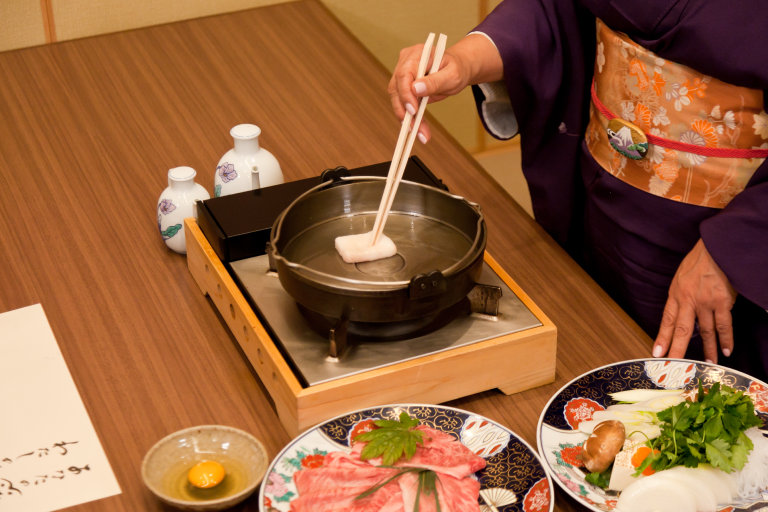
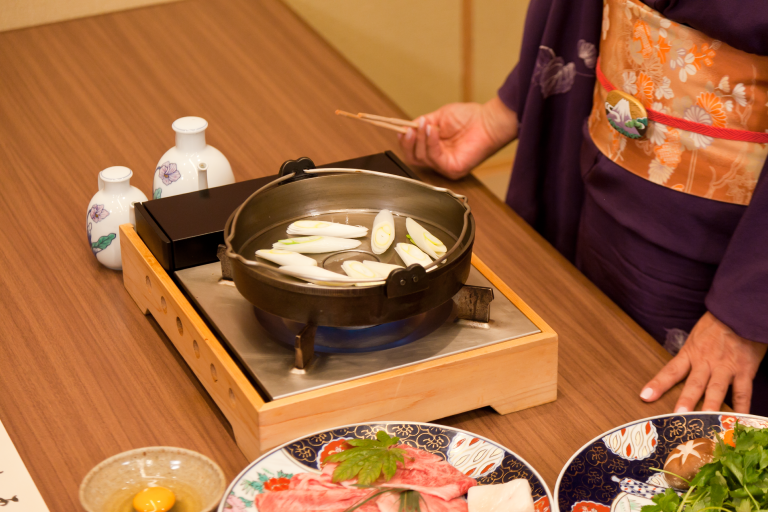
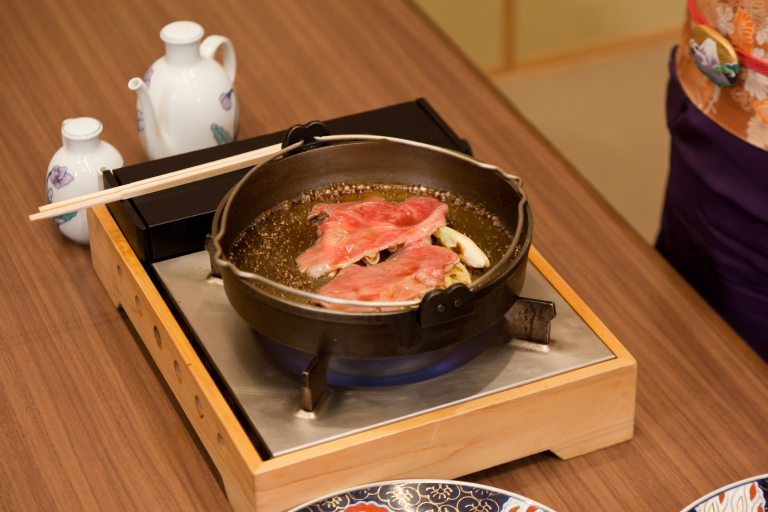
Onion
The meat has been spread over the onions, just like before. This allows the umami of the meat to permeate into the onions.
The umami compounds include not only inosinic acid but also glutamic acid, which is enhanced through a synergistic effect. Sukiyaki is often said to be all about green onions, and the summer is a time when the quality of green onions is low. But at Kakiya, we received great feedback when we used onions in the summer and as a result, we serve onions throughout the year.
Traditionally, sukiyaki is said to consist only of green onions. Until the Meiji era in Japan, there was no widespread tradition of consuming beef, so there may have been resistance to eating grilled meat. It is said that due to its ability to counteract the smell of meat, green onions have been used as a vegetable in sukiyaki since ancient times. Cabbage and onions, as ingredients for sukiyaki, came into the picture at a later time. The theory of sukiyaki originating in the Kanto region emerged during the Meiji era. The theory of sukiyaki originating in the Kansai region is said to date back to ancient times, and it's unclear when exactly it began. Back then it was illegal to eat beef, so they did so secretly. When the working cattle on the farm became unable to work, what happened? Without a doubt, they would have consumed them.
We move on to finishing with the onions. Onions are being grilled. There is no broth. It’s more like sautéing than grilling them. That's how I cook them, with seasonings, no sauce.
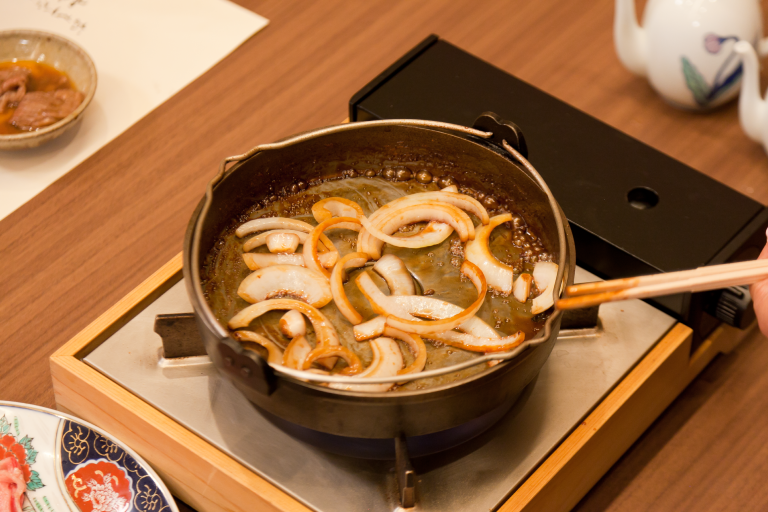
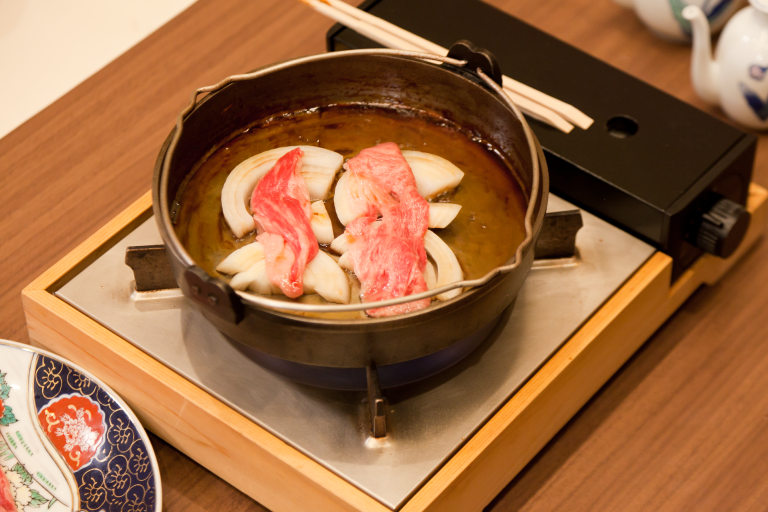
Shiitake Mushrooms and Tofu
As you can see, the pot has no broth left after the 3rd stage. This time, I'll add shiitake mushrooms and tofu.
Since using only shiitake mushrooms leaves too many gaps and the pot may burn, I add tofu along with them. It's okay to put it in together with shiitake mushrooms because tofu is not a vegetable. The reason I used only one type of vegetable until the second stage is that each vegetable has its own optimal cooking time for the best flavor. To ensure you enjoy each vegetable in its best state, I use one type of vegetable at a time. Shiitake is being sautéed in the same way.
If you over-grill shiitake mushrooms, they shrink by about half and become wrinkled, making them unpalatable, completely missing the timing for perfect flavor. In common sukiyaki where the ingredients are simmered in broth, even if you miss the timing, the flavors still dissolve into the broth. However, in my sukiyaki, which has almost no broth, the umami components don't leach out much. That's why it's best to enjoy it the moment it's cooked.
Cooking the meat on top of the shiitake mushrooms creates a synergistic effect between the meat's inosinic acid and the mushroom's guanine, enhancing the overall flavor. In common sukiyaki with broth, the flavor easily permeates inside tofu. However, in my sukiyaki, the flavor doesn't penetrate as much. That is why I flip tofu a few times to coat them with the flavor. Coat the tofu with the concentrated broth sauce. It might appear too rich in flavor, but inside the tofu is pure white, in just the perfect, delicious state. When you take a bite, the tofu's flavor emerges from within, creating a perfect balance.
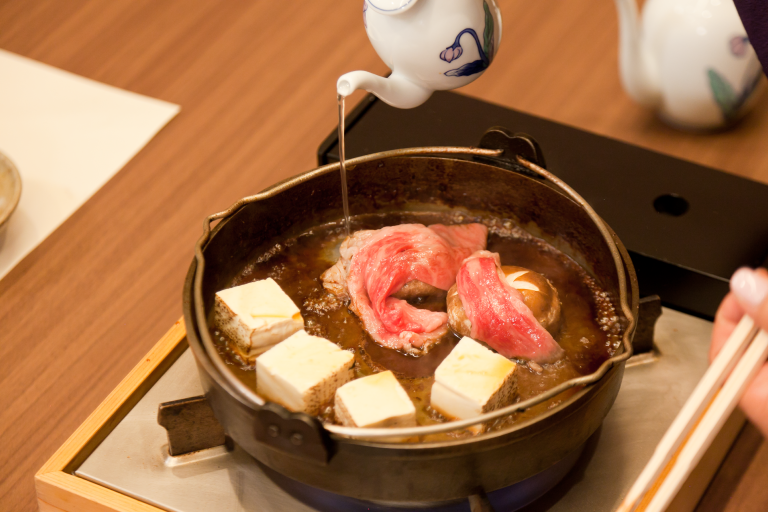
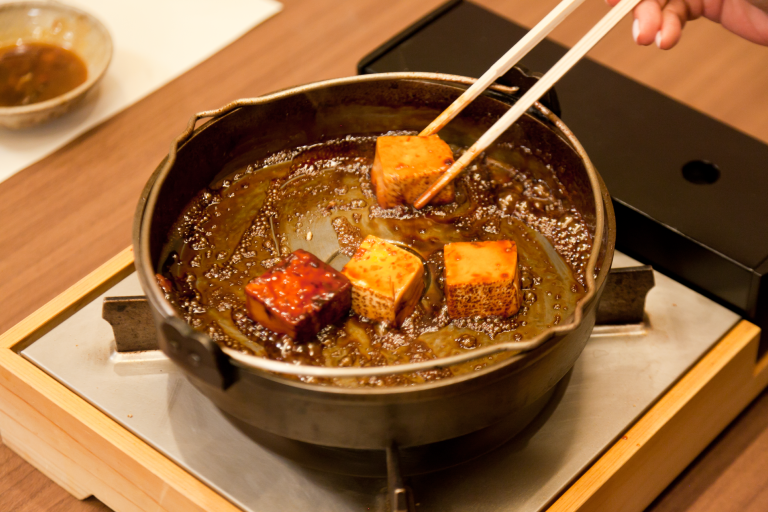
Mitsuba
Similarly, with mitsuba, I spread the meat on top. Mitsuba cooks quickly. The same goes for shungiku (garland chrysanthemum). Green leaves cook quickly, so be careful not to overcook them. With my cooking method, I always grill only one type of vegetable at a time, allowing me to focus on controlling the heat. Enjoy the mitsuba in its most delectable and beautiful state, still fragrant. Cooking mitsuba can be quite challenging. Although it cooks quickly, stopping the heat too soon won't make it flavorsome. I stop the heat a little early and utilize the residual heat from the pot. This results in mitsuba that is just right, ready to be enjoyed.
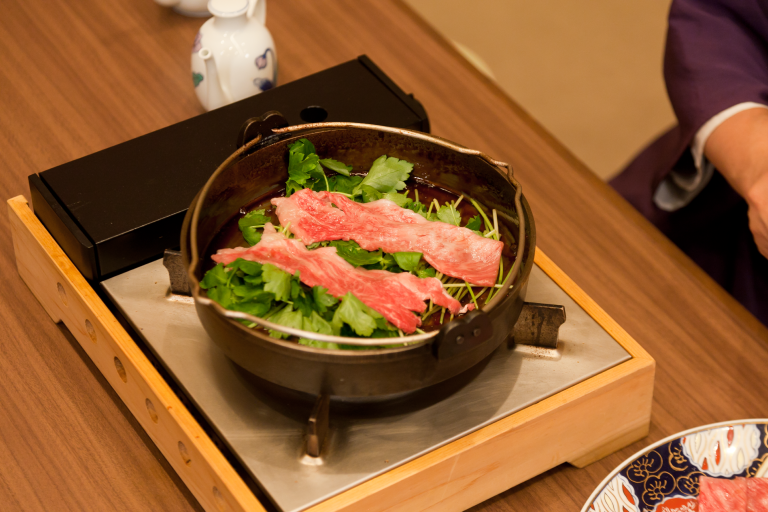
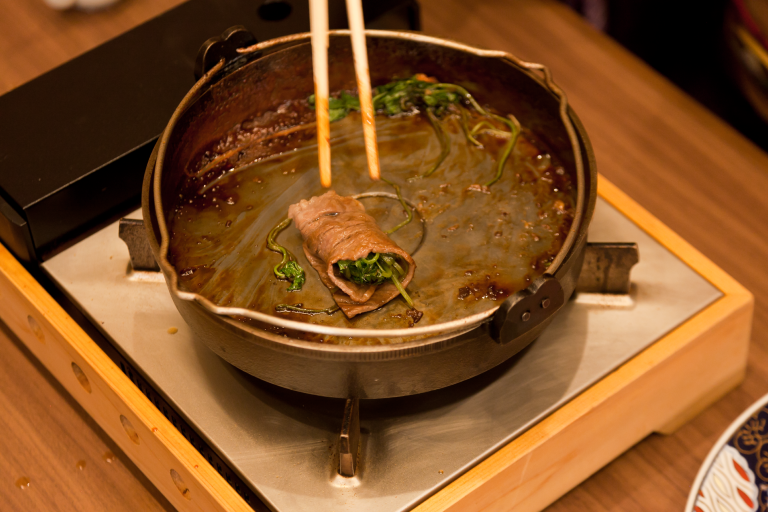
Shabu-shabu
The 5th stage is a bit different. Until now, the broth added has been about this much, but this time, I'll add a lot of it. Because I want to make "sukiyaki shabu-shabu" this time. I'll briefly blanch the meat in the pot.
If you put all the ingredients in the pot and simmer them, the eating style becomes uniform. However, with my cooking method, you can vary the way you eat. Even with high-quality meat containing plenty of unsaturated fatty acids, as you continue eating, you may gradually start to feel a bit of stomach discomfort. To prevent that, towards the end, I serve meat with mitsuba so that you can enjoy them together. For sukiyaki shabu-shabu, blanch the ingredients in a light broth, allowing you to enjoy a refreshing flavor.
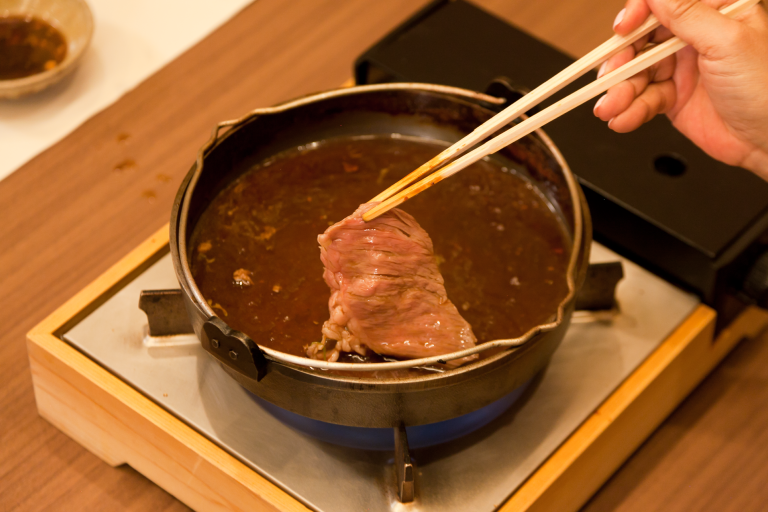
Shirataki
We are now moving on to the finale.
Since we've done sukiyaki shabu-shabu, there is plenty of broth in the pot. The shirataki noodles will absorb this broth. When the broth is completely absorbed, it transforms into something like yakisoba. The shirataki will take on a distinctly different texture from the usual boiling method. I insist on grilling and sautéing until the end when it comes to sukiyaki. With the broth gone, the temperature is now 100 ℃. It will start to brown from here.
When you hear the sizzling sound change, it will be done shortly. Since the moisture has evaporated, please enjoy it as is, without any additional condiments. You can also dip it in a raw egg and enjoy two different flavors.
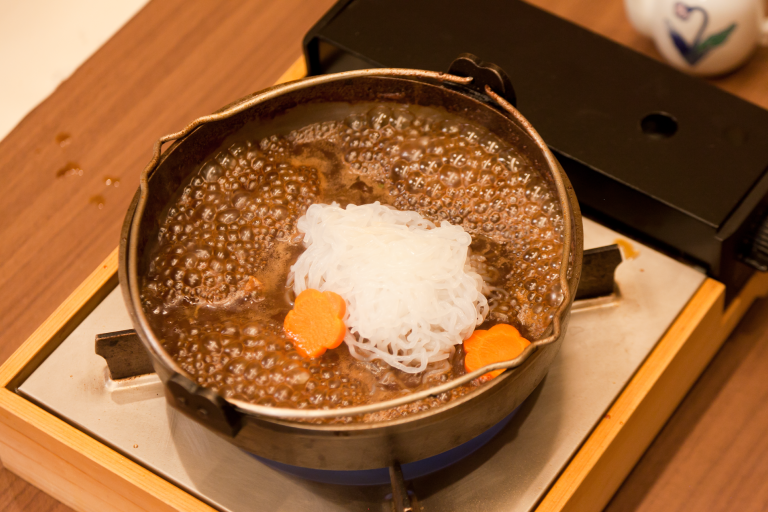
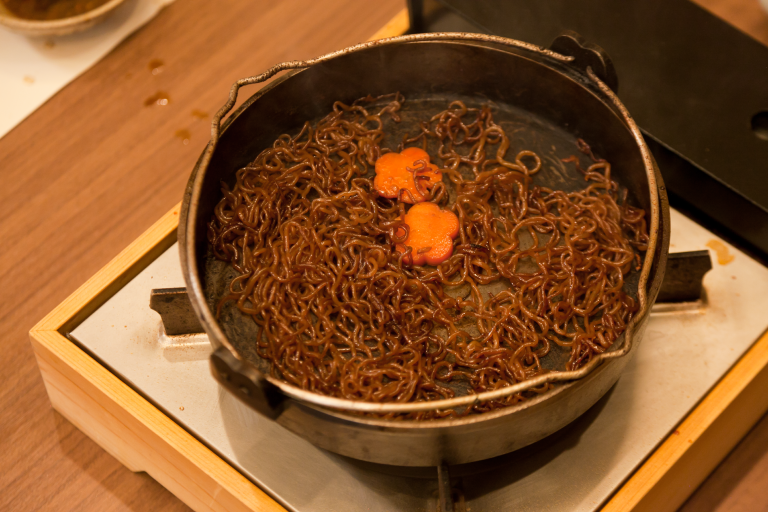
ACCESS
Traditional Japanese Style Wagyu Restaurant
Kakiya
1F, Yoshimura Building, 4-10 Saneicho, Yokkaichi City, Mie Prefecture 510-0068Phone 059-337-8835
RESERVATION
For reservations please call
Phone 059-337-8835Business hours
11:00~15:00(LO:14:00)
17:00~22:00(LO:21:00)
Closed: Thursday
Parking available (8 spaces)
